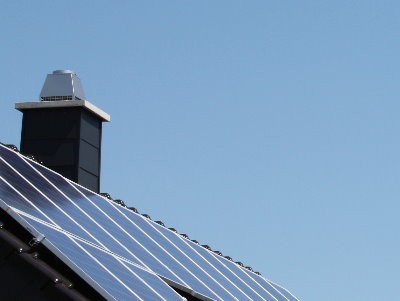Calculation of photovoltaic systems yield - Calculate Now
The topic of saving electricity costs by having one's own photovoltaic system on the roof is currently on everyone's lips, because almost every homeowner sets himself the goal of keeping electricity costs as low as possible in the long term.
With this online calculation tool you can calculate your approximate expected electricity yield with the PV system. Of course, the system output depends on the individual solar module output and the amount of solar irradiation in your region (see info fields).
Use this calculator to check in advance whether your planned system yield covers your necessary electricity consumption for your house. Furthermore, we also offer an extended photovoltaic calculator including calculation of the savings with the PV self-consumption option.
Photovoltaic systems and photovoltaic module types
1. monocrystalline silicon solar cells: Through the Czochralski process, molten silicon is pulled into an elongated single crystal and cut into slices. Monocrystalline silicon solar cells are characterized by a uniform, smooth surface as well as broken corners.
2. multicrystalline silicon solar cells: In this type of solar cell, molten silicon is poured into angular molds to prevent single crystal formation. Then the coarse-grained blocks are cut into slices. Multicrystalline silicon solar cells can be recognized by their irregular and coarse-grained surface, on which the crystals are clearly visible.
3. amorphous silicon solar cells: In this case, the silicon is deposited from the gas phase onto a carrier, which is often glass, as a thin layer. Amorphous silicon consists of disordered silicon atoms, which is why a crystal structure is not visible.
Performance and cost efficiency of different types of PV modules
The different types of solar cells have different efficiencies.
- The monocrystalline silicon solar cell achieves an efficiency of 18 to 22 degrees under real conditions compared to 25 degrees under laboratory conditions.
- The multicrystalline silicon solar cell achieves an efficiency of 15 to 20 degrees under real conditions versus 21 degrees under laboratory conditions. The production of multicrystalline solar cells is less costly, resulting in modules with this type of cell being less expensive and more widely available.
- The amorphous silicon solar cell (thin film cell) achieves an efficiency of 4 to 8 degrees under real conditions compared to 11.5 degrees under laboratory conditions.
- CIGS modules (micromorph silicon solar cells, the CIGS and CdTe solar cells) achieve about 15% efficiency
Technical developments and potentials
The predominant interest of research and development in the next few years is focused on increasing the efficiency. For example, the aim is to achieve a PV system efficiency of 80% in the near future, which will only be achievable with improved solar cells.
Lifetime, optimal operating conditions for best PV performance
In Germany, a photovoltaic system achieves the maximum yield when the PV system is oriented directly to the south with an angle of inclination of 30°. If an orientation is only possible between southwest and southeast, one still achieves 95% of the possible yield. PV tracking systems can be used to ensure an optimal position of the modules at all times.
Most power losses are caused by shading. Furthermore, the temperature of the solar modules plays a significant role in the power output, cooler cells work more efficiently than hot cells, which is why green roofs are ideal for roof mounting, among other things. At present, PV systems are expected to have an average operating life of between 20 and 25 years.
Manufacturing costs and energy balance of common PV modules
The energy payback time is between 3 and 5 years, depending on the module type, quality and manufacturer. Within the operating period of 20-30 years, a PV system generates 4 to 10 times the energy that was required to manufacture the system. From this it can be concluded that a photovoltaic system has a positive energy balance.
Price development in the last decade and forecast
The prices for PV systems have dropped significantly in the last decade. Standard market values for current system costs are between 4 and 8 euros per watt peak, depending on the size of the system for grid-connected systems. The share of module costs is between 50 and 60%, that of the inverter is 10%. The remaining shares are accounted for by substructure, assembly, planning, distribution and the like. Undoubtedly, system costs will be further reduced by more efficient manufacturing processes and mass production.
Topics: energy



